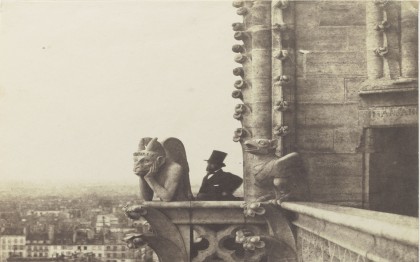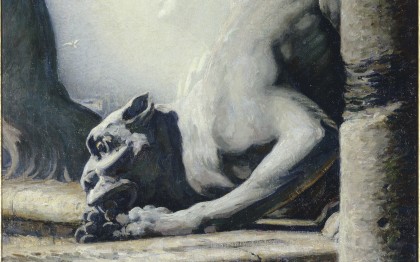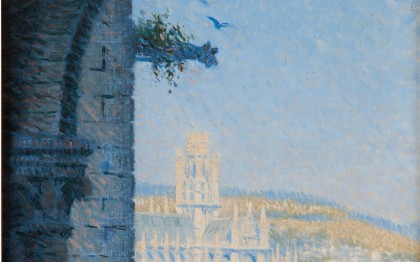Gargoyles, whose utilitarian function was to spit out rainwater, had been integrated into cathedral décor, as had so many other monstrous creatures. They were particularly common in Victor Hugo's novel and echoed Quasimodo's deformity. Artists were particularly fascinated by this grotesque imagery, which reflected the 19th century passion for physiognomy.*
Viollet-le-Duc, who described them in his Dictionnaire de l’architecture, portrayed them on many occasions. After the 1848 Revolution, he started work on a project to create a 'gallery of chimeras' for Notre-Dame de Paris; this was a series of fantastical creatures which were not completed and installed until 1855-1856. The work as a whole became a theme for paintings, literature, pictures and photography.
One of these chimeras, the Stryge, was intended to stand out from the others. Its demonic yet sardonic appearance and its contemplative pose above the capital, as if absorbed by the spectacle of urban life, conferred upon it a rare symbolic power. The creature created by Viollet-le-Duc, which first appeared in visual arts in 1853 in the photograph taken by Charles Nègre and the eponymous engraving by Meryon, would be interpreted in a wide variety of ways, even by modern artists such as Brassaï and Chagall, and would become a new icon of Paris.
* The study of a person's temperament and personality based on their appearance, features and facial expressions.




